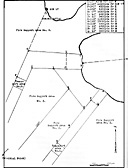
Chapter 2
Organization for Landing Operations
| Paragraphs | ||
|---|---|---|
| Section I. | Organization and Command | 34-45 |
| II. | Beach and shore parties | 46-51 |
| III. | Station and maneuver areas | 52-57 |
Section I
Organization and Command
-
Control.--
- A joint expeditionary force may be organized into two or more joint attack forces if separate operations are contemplated at such distances from each other as otherwise to make control difficult or impracticable. A joint attack force includes a naval attack force and the landing force associated therewith.
- Coordination of the operations of Army and Navy forces is by mutual cooperation or by the exercise of unity of command. See Joint Action of the Army and the Navy.
- For the normal respective tasks of the Army and the Navy in the joint oversea movement and the subsequent landing operations, see Joint Action of the Army and the Navy.
- Army and Navy commanders of a joint expeditionary force with their respective staffs should be embarked on the same ship, as should also the respective army and Navy commanders of a joint attack force. This method should be applied where practicable, through all echelons of command.
- The mutual exchange of highly qualified liaison agents assures a degree of cooperation between the Army and the Navy not otherwise readily obtainable. In joint operations the commander of one service should have on his staff members of the other service.
- Naval Attack Force.--A naval attack force is the naval unit in landing operations. consisting of transports, cargo ships, and supporting naval vessels, operating against a continuous shore line, usually designated by the geographical name of the locality, or by the terms "right," "left," "center,"
